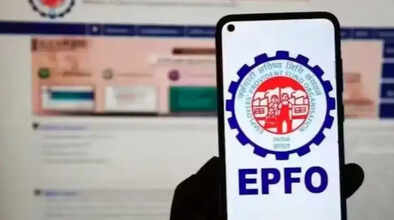EPFO New Rules: Now you can withdraw all your PF funds from your account! Understand the new rules and the step-by-step process..

There's significant news for the nearly 300 million subscribers of the EPFO. Employed individuals will now be able to withdraw the entire amount from their PF accounts. However, there will be a requirement to maintain a minimum balance of 25%. This means that you can easily withdraw 75% of your PF account. Following a meeting of the Central Board of Trustees (CBT) chaired by Union Labor Minister Mansukh Mandaviya, the EPFO announced several relief measures. Withdrawing your EPF funds will now be easier than ever. Furthermore, there's no need to provide a reason for withdrawing 75% of your funds. In cases of natural disasters, pandemics, job loss, or other such special circumstances, you can withdraw funds without providing a reason. Decisions were also made at the meeting regarding the speedy settlement of claims.
An employee has two types of accounts in the EPFO. One section of your account is the PF account, and the other is the pension account. The 100% withdrawal requirement applies to the PF account. This means that the 25% minimum balance requirement will be met from your pension account.
To further modernize its services, the EPFO has approved the "EPFO 3.0" digital transformation framework, which will include features like cloud-based technology, mobile apps, and automatic claim settlement.
Let's learn about the major decisions taken at the EPFO meeting.
100% Withdrawal Made Easy
EPF members will now be able to withdraw the entire balance in their EPF account, including their own contribution and the employer's contribution. The EPFO has eliminated 13 previous, onerous conditions and now allows partial withdrawals in only three categories. These include critical needs like illness, education, and marriage, housing needs (purchase or related expenses), and special circumstances. Previously, only three withdrawals were allowed for education and marriage, but now 10 withdrawals can be made for education and five for marriage. Furthermore, the minimum service period, which previously varied for different needs, has been reduced to 12 months. This means that partial withdrawals will be possible even after just 12 months of service.
25% Minimum Balance Required
EPFO has also decided that 25% of the amount in a member's account will remain as a "minimum balance," so that this amount will continue to earn interest at a compounding rate of 8.25%. This means that, along with the freedom to withdraw funds when needed, pension fund benefits will also be ensured.
Withdrawals can be made without giving a reason.
Previously, in cases of disasters, epidemics, or special circumstances (such as natural disasters, unemployment, or epidemics), a reason had to be given for withdrawals, which often resulted in claims being rejected. Now this hassle has been eliminated. Members will be able to withdraw without giving a reason under special circumstances.
Auto Settlement Process Simplified
As per the decisions taken in the meeting, the settlement process is now being fully automated. No documents will be required for this. The withdrawal process is also being fully automated, which will expedite the settlement of claims. The period for premature final settlement has been extended from two months to 12 months, and the pension withdrawal period from two months to 36 months. This will allow members to withdraw funds for their needs without using their retirement funds.
Special Feature for Pensioners
EPFO has launched a special feature for pensioners, allowing them to submit Digital Life Certificates (DLCs) from home. This serves as proof of the pensioner's survival and is required to submit DLCs periodically. This facility will be completely free, meaning the pensioner will not have to pay any money. This expense (₹50) will be borne by the EPFO. This is a big relief for pensioners of remote villages.
Disclaimer: This content has been sourced and edited from NDTV India. While we have made modifications for clarity and presentation, the original content belongs to its respective authors and website. We do not claim ownership of the content.

